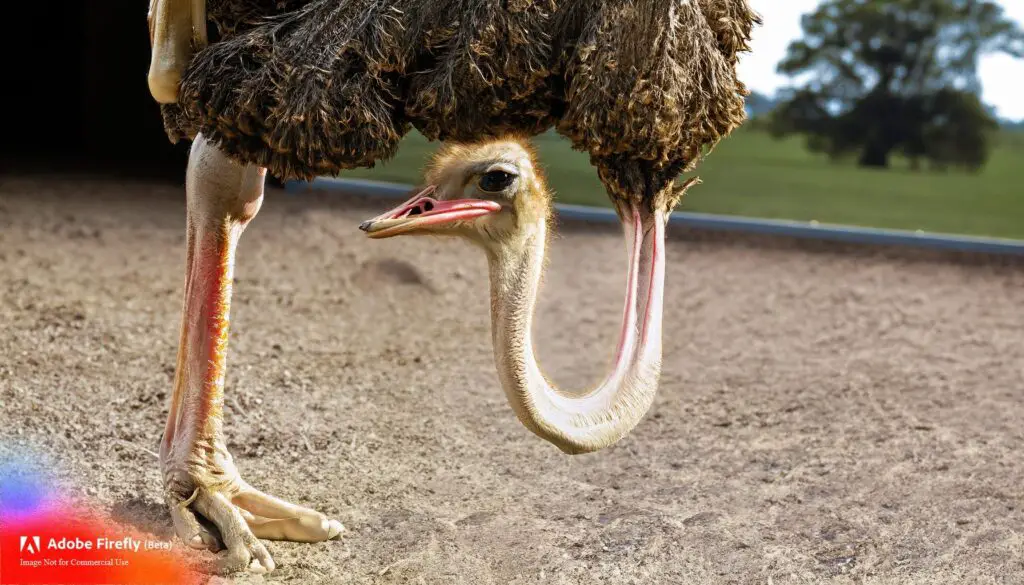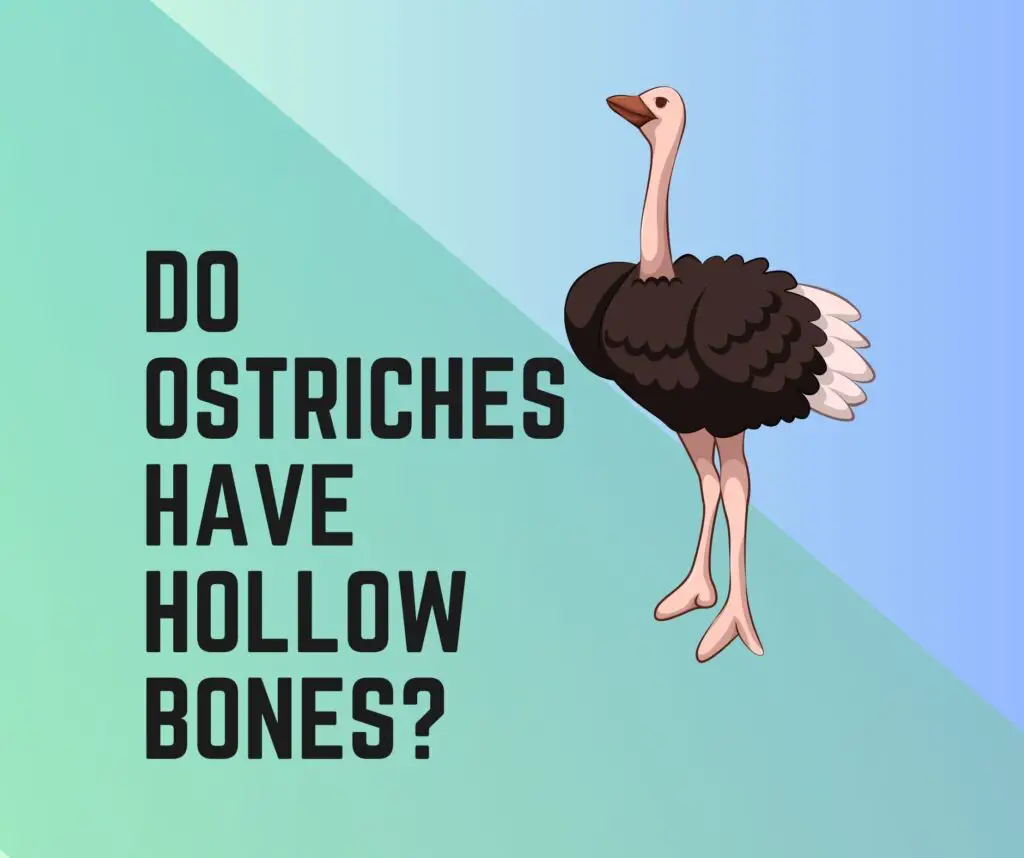Ostriches, those magnificent giants among Earth’s avian residents, have carved out their place as one of the planet’s largest bird species.
Within the tapestry of around 9,000 to 10,000 bird species that grace our world, 57 of these have abandoned the skies for the solid ground, with the Ostrich leading the charge.
When examining the inner structure of bird bones, one would find a network resembling a sponge, a stark contrast to humans’ dense, unyielding bones. This curiosity prompts us to ponder whether the majestic Ostrich also bears the hallmark of avian bone design: hollow bones.
Well, No, Ostriches don’t particularly have hollow bones. However, they have hollow femurs while the rest of the bones in their body are solid.
Yet, a departure from the norm is evident here. Unlike most of their feathered brethren, ostriches boast solid and resolute bones. The rationale behind this quirk lies in their earthly existence: ostriches’ feet remain steadfast, never to tread the skies.
Their notoriety for burying heads in the sand aside, the truth is clear: ostriches’ bones echo more with their winged kin than expected. While the iconic image of flighted birds streaking across our horizons lingers, these colossal beings, reaching towering heights of up to 9 feet and weighing a staggering 290 pounds, command a different narrative.
While their wings remain dormant, their leg bones do hold a hollow secret that bears the coveted hollowness. Yet, the rest of their skeletal framework remains a bastion of solidity.
The mystery of ostrich bones unravels with this paradox: hollow and solid in one, much like these enigmatic creatures themselves.
Why does Ostrich have hollow femurs?
Well, that’s something interesting to learn about. While ostriches are known for their solid bones, there’s a bit of a twist in there. Ostrich femurs, those thigh bones, are actually hollow. Why? Well, nature decided to throw in a surprise for us.
But it has an explanation.
Even though Ostriches aren’t meant to take high into the skies but nature has made them get into some serious running. Hollow femurs help them in a couple of cool ways, including building up their speed while running. Hollow bones mean less weight, and that’s crucial when running around. Such bones help Ostriches maintain the balance between being lightweight and strong. It helps them enjoy a land-based lifestyle.
And you know how they’re known for that impressive running ability?
Those hollow femurs play a role there too. Hollow femurs have Ostrict to maintain balance and stability while they run around. Also, when the weather is hot, Hollow Bones can be handy. The air pockets inside the bones act like natural insulation, helping ostriches stay comfy even when it’s scorching outside.
However, it is important to know that male and female ostriches have their differences. In fact, hollow femurs could be a part of that claim too.
Besides that, as Ostriches drum their feet to communicate, those hollow bones might add a bit of extra oomph to their signals. In a nutshell, the hollow femurs in ostriches are a bit of a surprise package.
Do all flightless birds have Hollow Bones?
Whether all flightless birds have Hollow Bones cannot have a Simple Yes or No as the answer. Even though hollow bones are a common feature in many flying birds, it isn’t a strict rule for flightless birds.
Here is Why?
As discussed above, hollow bones are like nature’s way of helping flying birds stay light enough to take to the skies. They’re sort of like built-in air pockets that keep things lightweight and efficient. However, for birds for whom flying isn’t a natural thing, the story can differentiate a bit.
Some flightless birds do have hollow bones, but it’s not as extensive as flying birds. For instance, penguins, those adorable tuxedo-wearing swimmers, have solid bones in most of their bodies. Their wings, adapted into flippers, don’t need hollow bones for flight, so their bones are more on the solid side.
Similarly, Ostriches, the focus of this discussion, have solid bones of theirs but their femurs, those thigh bones, are actually hollow. It’s like a nod to their avian lineage but tailored to their speedy, ground-based lifestyle.
Similarly, the kiwi, the flightless icon of New Zealand, has solid bones, which is in line with their burrowing and forest-floor hopping habits.
Overall, many flightless birds have evolved away from hollow bones as they’ve adapted to life without flight. However, some still carry a hint of that legacy, but in a more customized way.

11 Birds with Hollow Bones
Here’s a list of some bird species known to have hollow bones:
- Eagles, including the Bald Eagle and Golden Eagle, have hollow bones that contribute to their powerful flight.
- Hawks, particularly the Red-tailed Hawk, have hollow bones to support their soaring capabilities.
- Falcons are birds known for their incredible speed. These avians also possess hollow bones that enhance their agility in the air.
- Albatrosses are those magnificent seabirds with hollow bones that glide effortlessly over the oceans for long distances.
- Songbirds, including sparrows, finches, and warblers, have relatively lightweight hollow bones. These bone types help them with their agile and swift flight.
- Swallows, especially Barn Swallow, have hollow bones that contribute to their remarkable aerial acrobatics and swift flying.
- Hummingbirds, though, are tiny but have hollow bones that make their rapid and intricate flight maneuvers possible.
- Sandhill cranes have hollow bones that assist them during their long migratory flights.
- Various seagull species have hollow bones that help them soar and glide effortlessly over coastal landscapes.
- Pigeons have hollow bones, even though they might not be as acrobatic as other birds. It helps them with their agile urban flight.
- Owls do not have fully hollow bones but specialized air pockets in their bones that contribute to their silent flight and stealth hunting.
However, it is important to learn that the extent of hollow bone structures can vary among different bird species. Depending upon their flight behavior and lifestyle, some birds may have solid bones in some areas of the body and hollow bones in other areas of their body.
Wrapping up…
In the world of birds, hollow bones rule the skies. Eagles, hawks, and songbirds use them for flight acrobatics. Even penguins and ostriches have a touch of hollowness. These bones shape nature’s art of soaring and sprinting.

Hi, There and Welcome to BirdsNews.com, is here to help you learn and care about pet birds. and this blog is a journal of everything I’ve learned.

